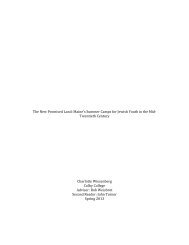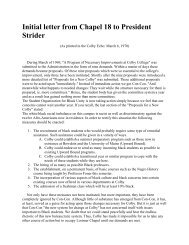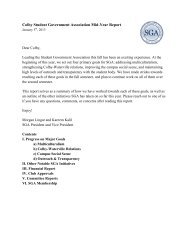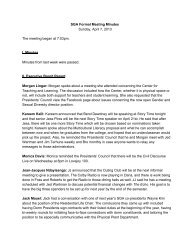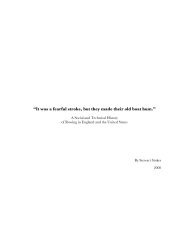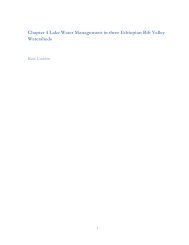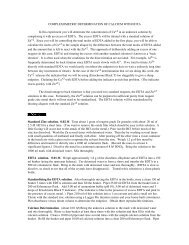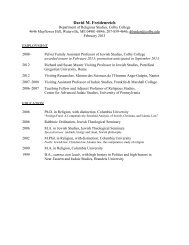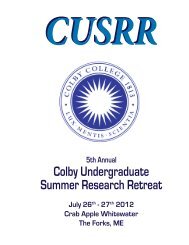College Attendance Among Jews in Lewiston, Maine, During the ...
College Attendance Among Jews in Lewiston, Maine, During the ...
College Attendance Among Jews in Lewiston, Maine, During the ...
You also want an ePaper? Increase the reach of your titles
YUMPU automatically turns print PDFs into web optimized ePapers that Google loves.
While Figure 1 represents students who graduated <strong>Lewiston</strong> High, Figure 2 demonstrates<br />
educational patterns among <strong>the</strong> general population <strong>in</strong> <strong>Lewiston</strong>. It is possible to study <strong>the</strong> percent<br />
of <strong>the</strong> population that is <strong>in</strong> school because <strong>the</strong> 1930 census-takers made note of every person who<br />
had been enrolled <strong>in</strong> school s<strong>in</strong>ce September 1929. Only about half of all <strong>Lewiston</strong> citizens of<br />
age 16-17 <strong>in</strong> 1930 attended school. School was only mandatory until age 16, and many of <strong>the</strong>se<br />
young people went to work <strong>in</strong> <strong>the</strong> mills <strong>in</strong>stead of f<strong>in</strong>ish<strong>in</strong>g high school. Although Joel<br />
Perlmann (1988) studied various ethnic groups <strong>in</strong> Providence, Rhode Island, he offers an<br />
explanation for <strong>the</strong> reason <strong>the</strong> <strong>Lewiston</strong> students went to work <strong>in</strong> <strong>the</strong> mills. Perlmann describes<br />
how Italian immigrants did not see <strong>the</strong> value <strong>in</strong> send<strong>in</strong>g <strong>the</strong>ir children to public school for longer<br />
than necessary when <strong>the</strong> children could be earn<strong>in</strong>g money for <strong>the</strong> family (84). A similar value<br />
system may have shaped <strong>the</strong> decisions of <strong>Lewiston</strong>’s large ethnic communities. Jewish young<br />
adults also often worked, but education was <strong>the</strong>ir families’ priority. As shown <strong>in</strong> Figure 2, all<br />
Jewish 16 and 17-year-olds <strong>in</strong> <strong>Lewiston</strong> <strong>in</strong> 1930 were <strong>in</strong> school, reflect<strong>in</strong>g how Jewish families<br />
placed value on f<strong>in</strong>ish<strong>in</strong>g high school.<br />
Figure 2. A statistical summary of <strong>the</strong> 1930 census gave <strong>the</strong> <strong>Lewiston</strong> school attendance rates for age categories 16-<br />
17 and 18-20, and I was able to calculate <strong>the</strong> equivalent rate us<strong>in</strong>g census data on <strong>Lewiston</strong>’s <strong>Jews</strong>.<br />
Figure 2 also <strong>in</strong>dicates that Jewish residents ages 18-20 were four times more likely to be<br />
students than <strong>the</strong>ir non-Jewish counterparts. When draw<strong>in</strong>g conclusions from this data, it is<br />
3



